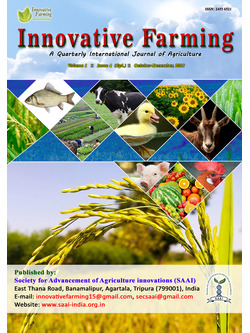
Prospects of Chromosome Engineering in Crop Improvement
Sai Rekha, K.*
Dept. of Rice, Tamil Nadu Agricultural University, Coimbatore, Tamil Nadu - 641003, INDIA
DOI: NIL
Keywords: Chromosome, Apomixis, Recombination
Abstract
The term ‘‘chromosome engineering’’ describes technologies in which chromosomes are manipulated to change their mode of genetic inheritance. The concept of “chromosome engineering” was introduced by the American researcher E. Sears in 1972, based on summarizing the results of his studies on the transfer of chromosome segment of Aegilops umbellulata in the genome of common wheat, carried out in 1956. Chromosome engineering in improving crop traits can achieve through: manipulation of whole chromosome sets, manipulation of individual chromosomes and manipulation of chromosome segments. The major tasks of chromosome engineering involves production of haploid plants through CENH3 modification, conversion of meiosis to mitosis through mutating spo11 rec8 osd1 (MiMe) and manipulating homologous recombination through spo11. The recent strategies of CE are recombineering and enhancer trapping but these are widely using in animal genetics and there is need to enhance these techniques especially in plant genetics for their improvement.
Downloads
not found
Reference
Aakash Goyal, Pankaj Kumar Bhowmik, & Saikat Kumar Basu. 2009. Minichromosomes: The second generation genetic engineering tool. Plant Omics Journal, 2(1): 1–8.
Pershina, L. A. 2014. Plant Chromosome Engineering Is an Area of Biotechnology. Russian Journal of Genetics: Applied Research, 4(4): 311–317.
Chan, S. W. L. 2010. Chromosome engineering: power tools for plant genetics. Trends in Biotechnology, 28(12): 75–78.
